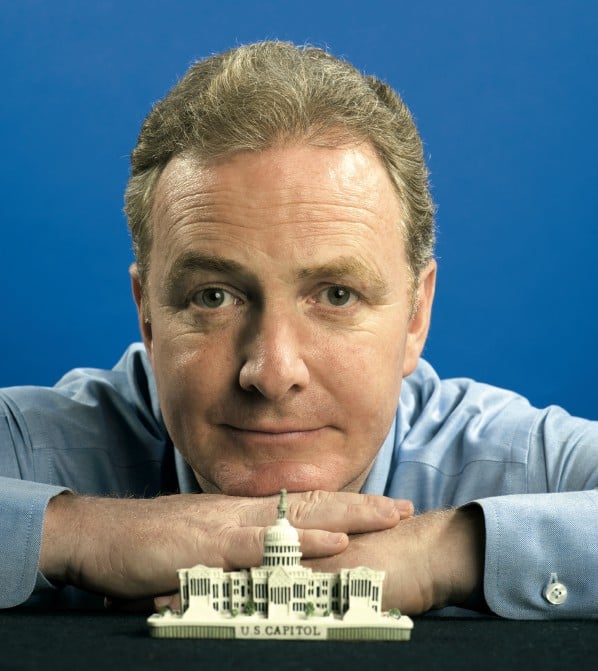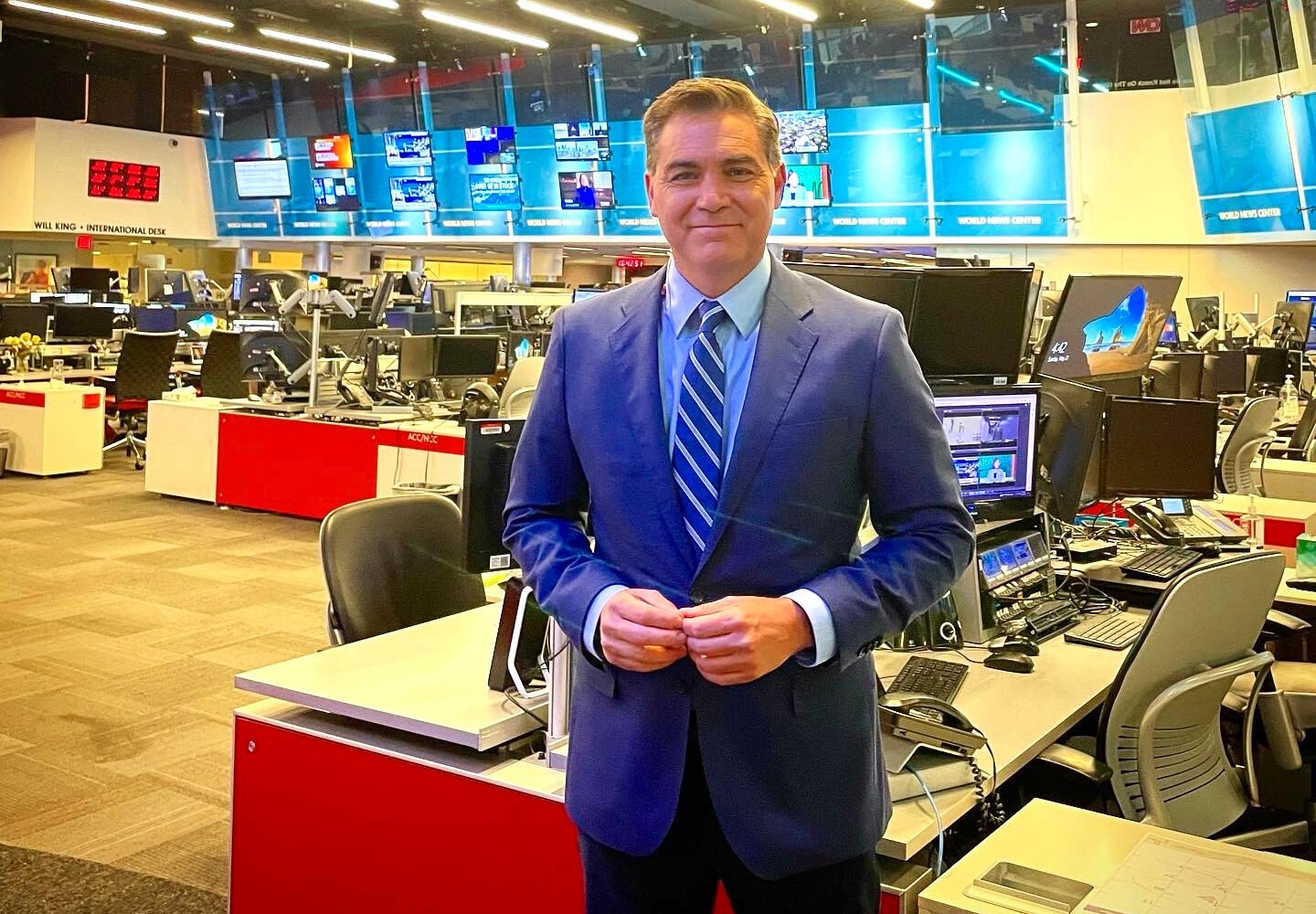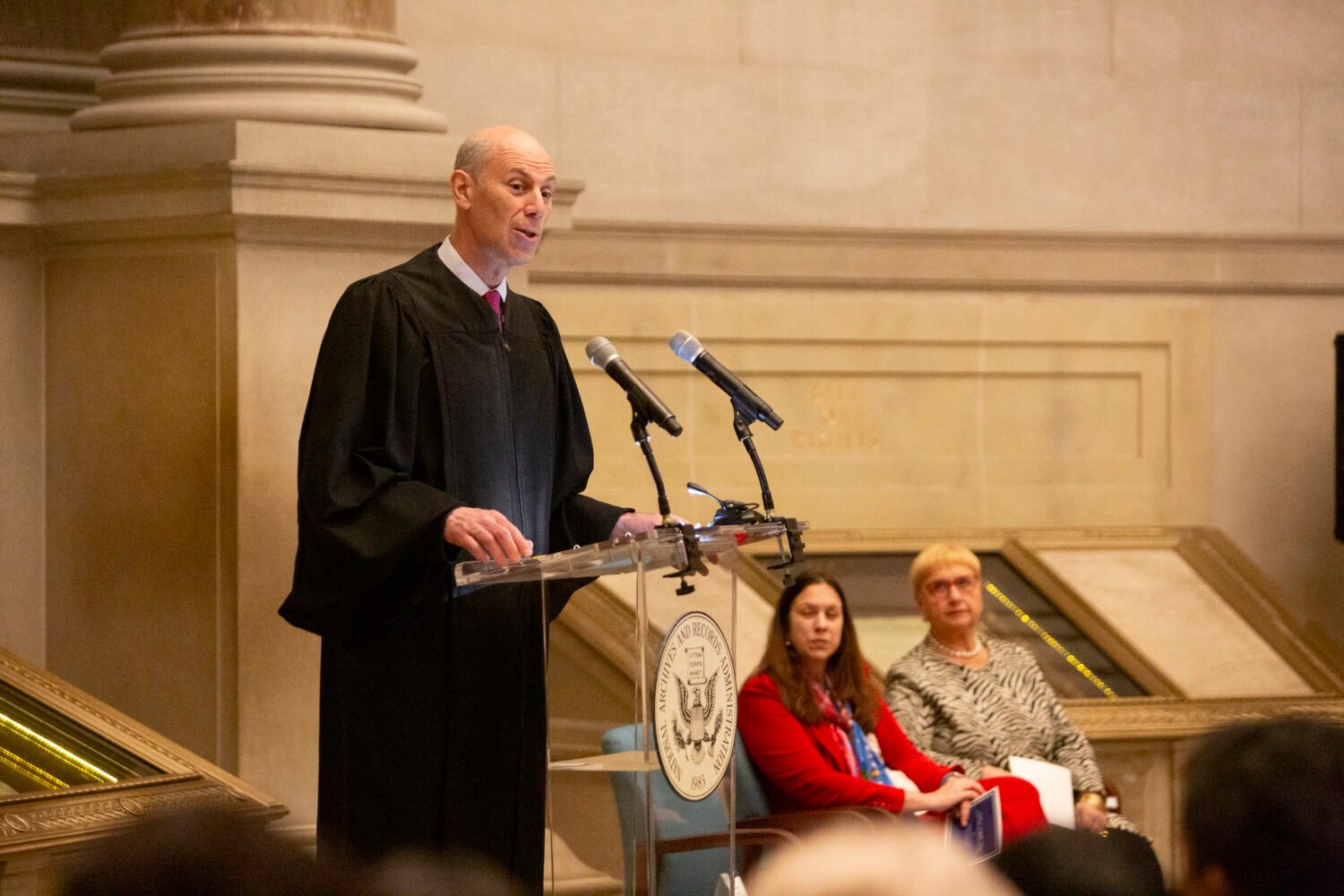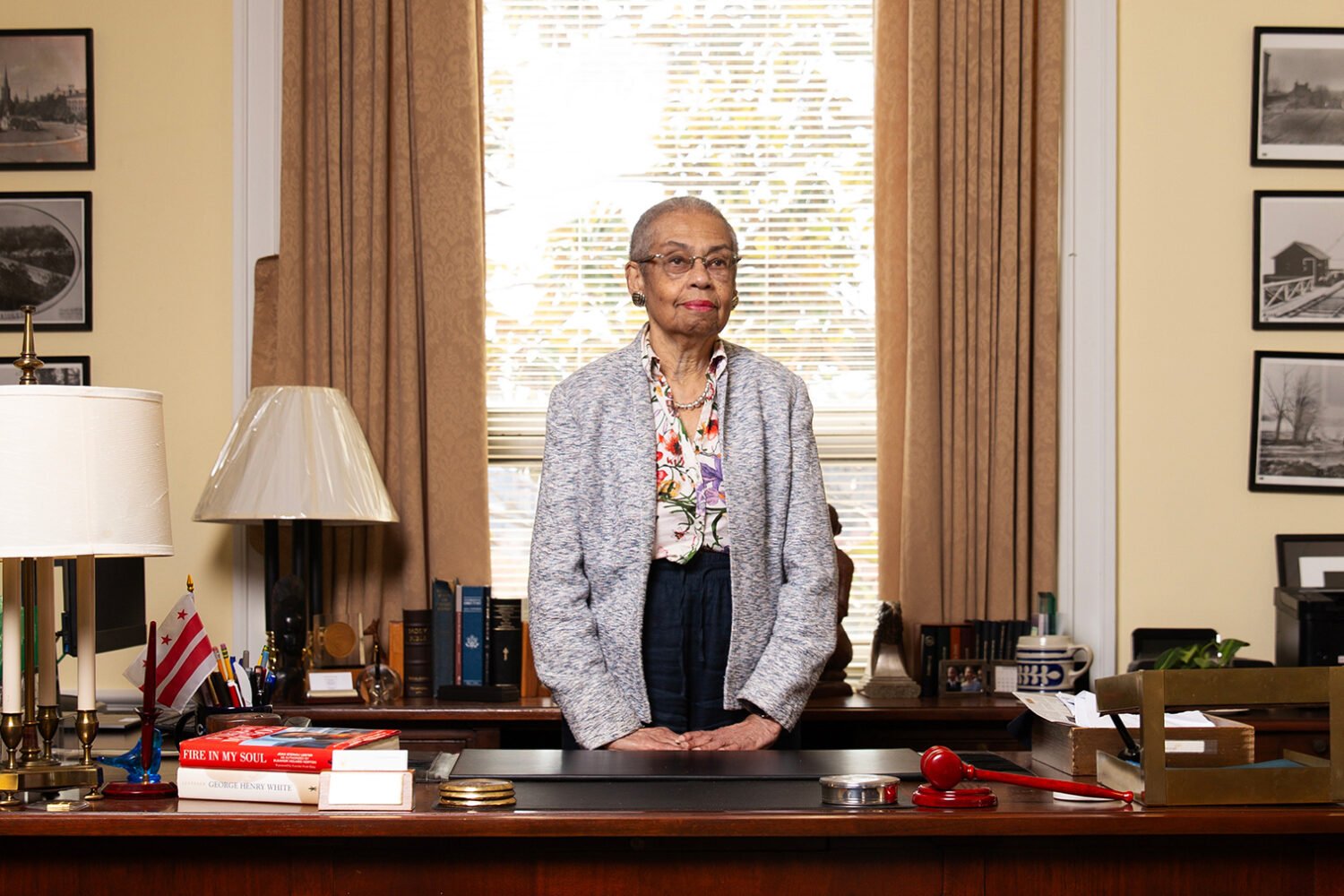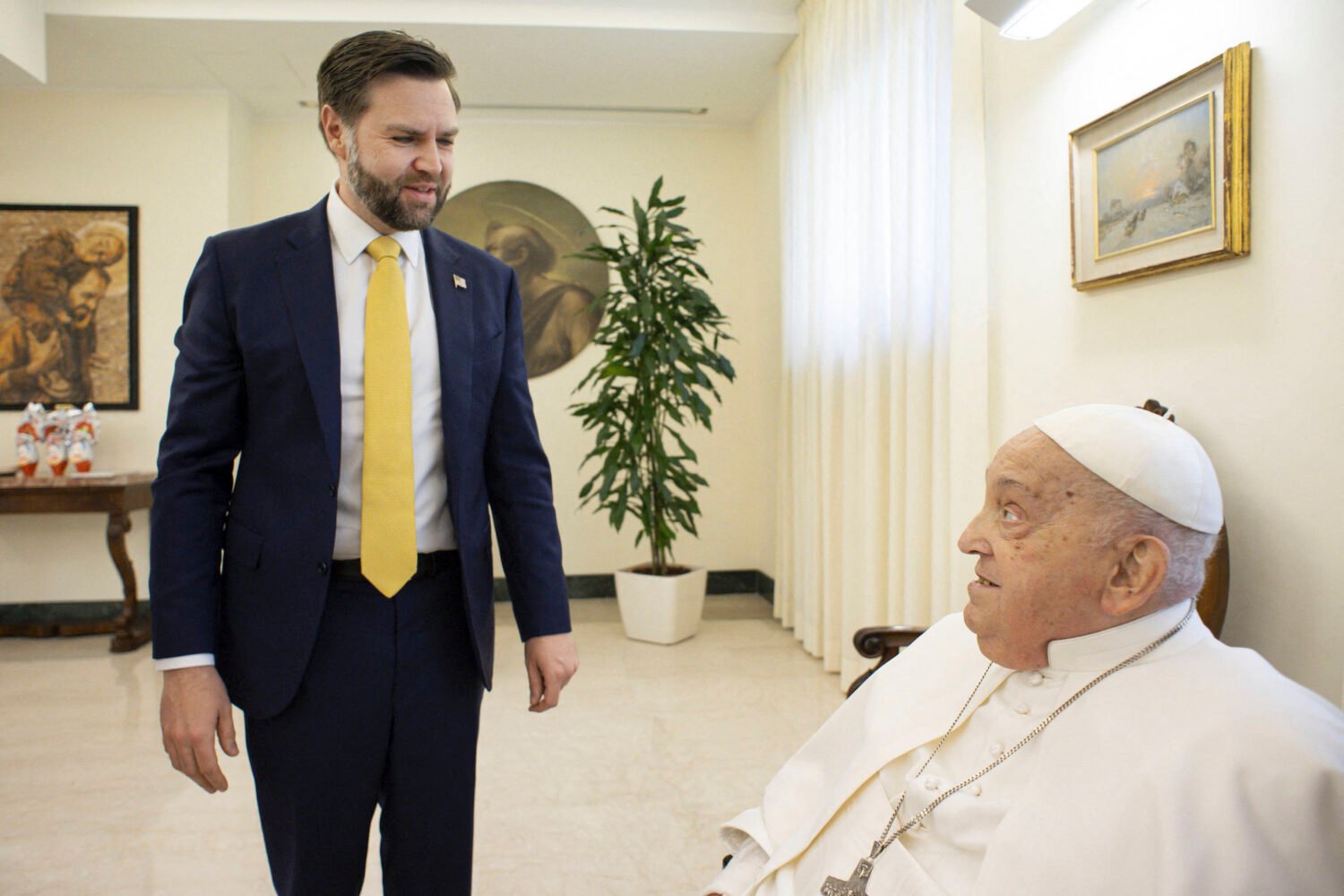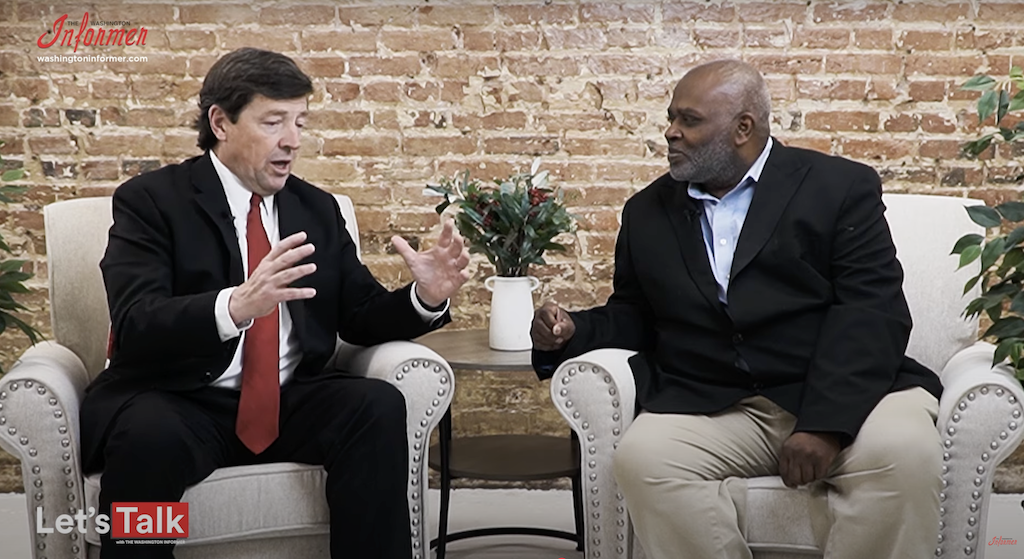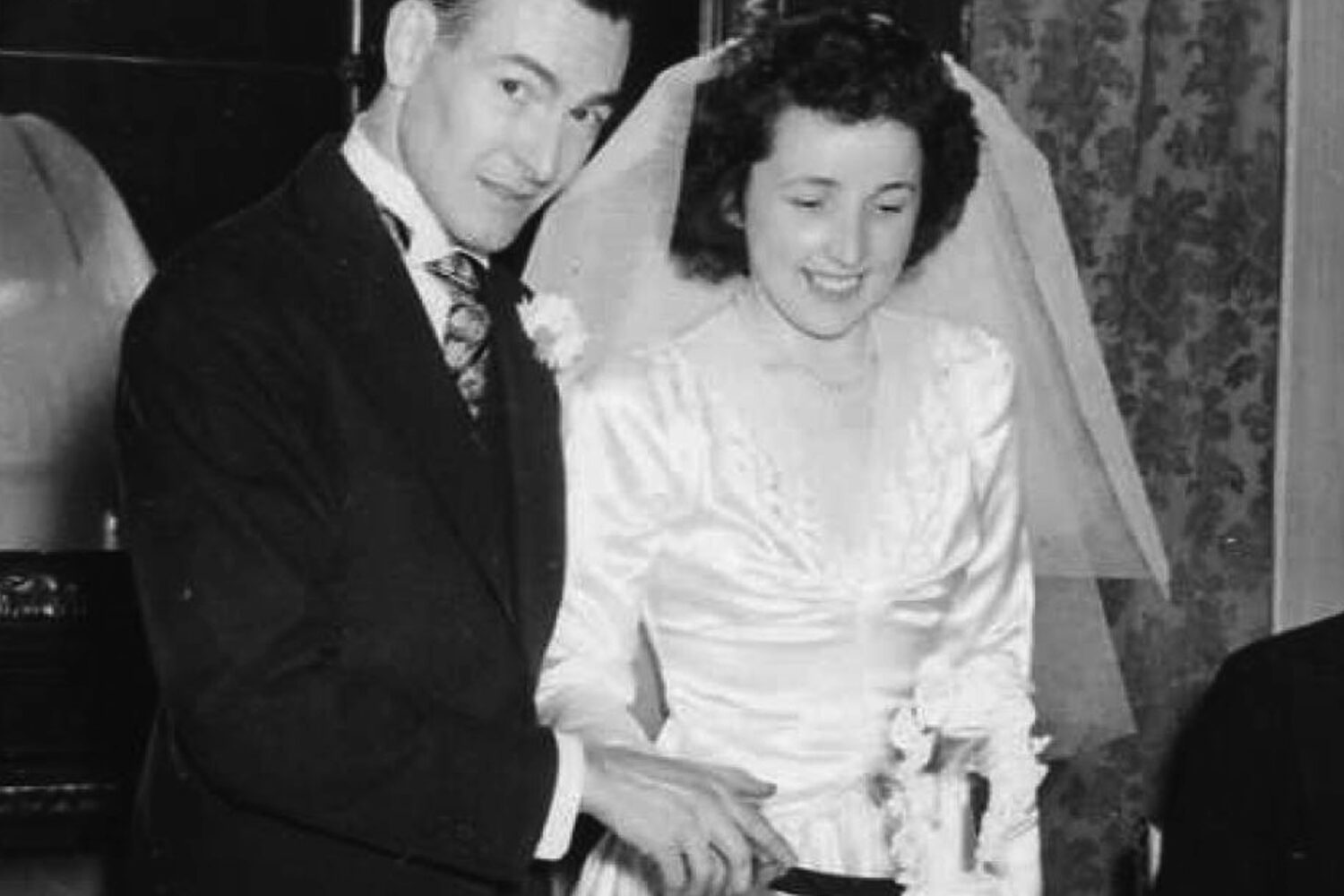Sitting in his modest Rockville office, Chris Van Hollen exudes confidence. There’s room only for a desk, a couch, and a few chairs, but the third-term congressman from Montgomery County is sitting pretty. The week before, five House Republicans announced they were stepping down, bringing the number of retiring GOP incumbents to a whopping 29.
Vacant Republican seats are a boon to Van Hollen, who chairs the Democratic Congressional Campaign Committee. It makes his job of electing Democrats a lot easier. He won’t say how many seats his party expects to pick up in November, but the smart money puts the figure at 12 or more.
“For me, the retirements are a validation of the strategy we’ve pursued,” says Van Hollen. “We want to keep the 30 seats we picked up in 2006, but this year, instead of just playing defense to hold on to those seats, which is the normal tendency, we’ve decided to go on offense, keeping up the pressure on Republican incumbents—making them spend money to defend districts that would normally be safe for them.”
There are aspects to the job—round-the-clock dialing for dollars, putting the arm on fellow members for contributions, digging up dirt on your opponents—that can’t be very appetizing. In recent months, several prospective Republican House candidates, feeling the hot breath of the DCCC’s opposition-research team, have decided against running. In Arizona, the former president of the state senate withdrew from consideration after a memo circulated by the Democrats detailed how his son had admitted to sodomizing younger boys with a broomstick.
“You have to do a lot of tough things,” says Rahm Emanuel, Van Hollen’s pugnacious predecessor at the DCCC. “This is not a business for the fainthearted.”
It’s hard to picture Van Hollen getting up in the morning and putting on his brass knuckles. Friendly, open, low-key, and slightly rumpled—his pants usually look a size too big—Van Hollen seems unfailingly . . . nice. If the intense Emanuel brings to mind a panther, ready to spring, Van Hollen is more of a teddy bear. Yet colleagues will tell you the amiable manner masks a burning ambition and a sharp political mind.
“Sure, he’s a very warm person. But don’t confuse that with having the steel to do this job,” says Emanuel, now head of the House Democratic caucus. “He just has great judgment in the heat of the moment. He’s a steady hand. He doesn’t shoot from the hip first and ask questions later like I do.”
At 49, Van Hollen is already one of the barons of Capitol Hill and a powerhouse in Maryland politics. It’s a big leap for someone relatively unknown outside Maryland until he ran for Congress in 2002. Six years later, he wields power over the fate of dozens of Democrats, deciding whether the party will put its weight behind their races or not. His own Democratic base is secure; the eighth district, which includes two-thirds of Montgomery County and a small slice of Prince George’s, has twice returned him to Congress with a handy 75 percent of the vote. So it’s not surprising that people talk about how he got so far so fast and where he goes from here.
Van Hollen first made his mark in the Maryland Senate, where he served from 1994 to 2002, spearheading successful efforts to raise the tobacco tax, prevent oil drilling in the Chesapeake, mandate trigger locks for guns, and increase funding for education and healthcare. He also forged a strong if at times ambivalent relationship with the powerful president of the state Senate, Thomas “Mike” Miller, who is to the right of Van Hollen on most issues.
The two got off to a bumpy start when Van Hollen, who had served four years in the Maryland House of Delegates, ran against his own state senator, conservative Democrat Patricia Sher. This raised eyebrows because it was Sher who put Van Hollen on the ticket with her when he ran for delegate in 1990. At the time, Sher, who died in 2001, said it was like one of her own sons had “kicked me in the mouth with a boot.”
To Van Hollen, the move was justified. “She was out of step with the district on a lot of issues, including the environment, tobacco, and education, and she was very cozy with the special interests,” he says.
The political is often personal, however, and Sher was popular among her fellow senators, including Miller. “Patty was Miss Silver Spring—somebody you’d enjoy meeting at a crabhouse where she could smoke a cigarette, drink a beer, and eat her crabs,” says Miller. “People enjoyed her raspy voice and her great sense of humor. But she was also a very effective senator, and because of her popularity, she was able to get things done.”
Although Miller acknowledges that Sher’s stands often put her at odds with her Kensington–Chevy Chase district, he was dead set against Van Hollen at the start. As the campaign progressed, it became apparent that Van Hollen was not only going to win but win big. Miller figured he’d better get to know him and called him into his office. “Chris was very smart,” he says. “Instead of saying, ‘You supported the other guy. Now get lost,’ he reached out to me. He said, ‘You’re the president of the Senate, and I understand you have to support the incumbent.’ ”
At the same time, Van Hollen knew how to press his advantage. “I asked [Miller] to please stop helping my opponent,” he says. “And I got the subcommittee I wanted on taxation and the budget.”
If some of his new colleagues expected Van Hollen, a diplomat’s son educated at Swarthmore, Harvard, and Georgetown Law, to hold himself aloof, he surprised them with his readiness to have a beer or play a hand of poker. Often he could be found around the table at then-governor Parris Glendening’s games at the mansion. “He’s a very good poker player,” says Glendening. “He plays poker the way he plays politics—friendly, aggressive, and you never know exactly what his hand is.”
Van Hollen made himself an expert on the rules of the Maryland Senate, becoming the go-to guy for proponents of progressive legislation. “All of us liked working with him,” says Vinny DeMarco, a fixture on the Annapolis lobbying scene. “He combined a deep commitment to progressive causes like healthcare,
education, and the environment with incredible political smarts. On top of that, he’s incredibly nice.”
Conservative legislators were not so enthusiastic. When I asked Miller if it was true that Van Hollen was a master of the rules, his reply was brusque: “He had to be. He was so strident and liberal that his opponents wanted to use the rules to take him down.”
Some reporters were skeptical of Van Hollen’s tendency to put himself at the forefront of high-profile battles; he got a lot of ink pumping for issues such as raising the tobacco tax and opposing the proposal to use public money to build a football stadium for the Baltimore Ravens. “He was very adept at getting positive press,” says a reporter who covered him. “There are two kinds of people in the legislature. There are inside players who want to advance in the leadership. They work their way up quietly and are diligent about studying bills. Others do it by getting publicity. Chris was an outside player.”
Miller, who entrusted to Van Hollen management of several controversial bills on the Senate floor, takes a more positive view. “There are workhorses and there are show horses,” he says. “Chris was both. He was a man for getting work done.”
When Van Hollen decided to make a run for Congress in 2002, he was cast as the underdog. His principal opponent, JFK nephew Mark Shriver, had a big advantage in money and name recognition and more support among the party’s regulars. Maryland’s Steny Hoyer, now House majority leader, had tried to persuade Shriver to run in 2000. “I’d known the Shriver family since 1962 and had been close to them for all that time,” he says. “I wasn’t against Chris, but I was for Mark.”
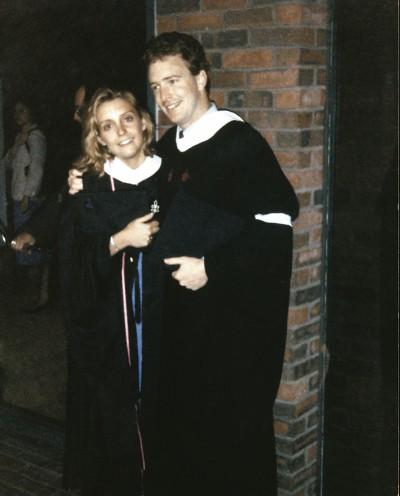
Van Hollen and Shriver were seeking to unseat the popular eight-term incumbent, Connie Morella, a moderate Republican who often broke with her party. She presented a tempting target in 2002. In the previous election, she’d narrowly beat back a challenge by Terry Lierman, a wealthy businessman. State Senate president Miller had made it clear that the eighth congressional district would be redrawn to make it harder for Morella to win. “If she runs, she loses,” he proclaimed.
The impending redistricting set off a free-for-all in Annapolis. Glendening says a number of officials, including Shriver, a two-term delegate, argued for changes that would help them. But Glendening didn’t hear from Van Hollen. He asked Van Hollen if he was waiting to see how the redistricting would go. “Chris told me it wouldn’t have any effect on his decision, that he was feeling confident regardless of how the district was drawn,” the former governor says. “He said to me, ‘Do what’s best for the county, the state, and the party. I’ll run in whatever district you give me. All I ask is that you do it sooner rather than later.’ ”
Running against Shriver benefited Van Hollen in one respect—the race attracted major media attention. It had glamour—$1,000-a-couple fundraisers at the Shriver mansion in Potomac, Uncle Ted shaking hands at Metro stops, Maria Shriver jetting in from California to host a women’s luncheon.
Van Hollen’s fundraisers were family affairs, too. “Chris’s mother would make a ham and I would make a turkey, and we’d fill in with some hummus or pizza,” recalls Van Hollen’s wife, Katherine. “Every penny spent had to count. We were not eager to go out and hire a high-priced direct-mail expert, so Chris designed his own mail, and we took it to the printer. We did the whole thing from soup to nuts.”
Van Hollen’s mother and father, both retired from careers in government, threw themselves into the campaign, ringing doorbells and asking friends and former colleagues to host fundraisers. Sister Caroline helped organize his phone banks while daughter Anna, a sixth-grader at the time, formed a group called Kids for Chris. She and her younger brothers, Nicholas and Alexander, got their friends to march in parades and hand out leaflets.
Van Hollen did not hire any professionals until July 2002, a year after he announced, but he was already raising big money on his own—the campaign raised and spent more than $1 million in the primary, most of it in small donations. He mobilized volunteers, everyone from parents he’d met coaching his kids’ soccer teams to the public-interest groups he’d helped during his 12 years in the Maryland legislature.
“The thing that Chris had going for him were statewide advocacy groups—environmental groups, antismoking groups, gun-control advocates, child advocates—all kinds of groups who just considered Chris to be their number-one guy,” says liberal lobbyist Eric Gally, who took time off from his job to help Van Hollen’s campaign. “I was in charge of a region for knocking on doors the night of the primary, and usually you’re desperate for people, but so many vanloads of volunteers showed up that after a while I didn’t have anything for them to do.”
Van Hollen beat Shriver by 2,400 votes.
Running against Connie Morella, who had a 75-percent approval rating, put Van Hollen’s strategic skills to the test, particularly after she launched several negative ads. She accused him of favoring a tax cut for the wealthiest Marylanders and drew attention to the brochure he’d used in the primary that pictured him on a fake cover of Time magazine, which had praised him. (Time demanded that he withdraw the offending cover. He did.)
“Connie was hitting us pretty hard, and I kept getting calls from the Hill saying, ‘You gotta go back at her,’ ” says Thomas O’Donnell, who was handling media for Van Hollen. “But Chris argued that we couldn’t get into it with Connie. He said ‘If it’s a contest over whether they like me better or her, I lose. We have to make it a contest between the Republicans and the Democrats and who is going to control the agenda in Congress.’ And he was right.”
Van Hollen beat Morella 52 to 48 percent with help from his volunteer army and from the DCCC, which spent more than $2 million on his race. But probably no one deserved more credit than his wife, Katherine. She was so involved in his campaign and such a forceful presence that staffers complained about her.
Katherine, whose father once told her that Chris was too honest and straightforward for politics and that she would have to protect him, sees her role as necessary. “We have different styles,” she says. “Chris always sees the best in people. Sometimes I think it takes him a long time to complain about a staffer. I’m perceived as more of the enforcer. That’s my job around the house and in general.”
Says Van Hollen: “If there’s somebody who’s not performing, I try to work around them.”
Management styles aside, they seem well suited. They met and debated arms control at a party while enrolled at Harvard’s Kennedy School of Government. As brainy and ambitious as her husband, Katherine studied at Cornell and the London School of Economics and went on to become staff director of a House foreign-affairs subcommittee. Most recently she served as president of the World Affairs Council, Washington DC, a nonprofit that seeks to educate the region about international issues. Van Hollen served as an arms-control and foreign-policy expert for the US Senate in the ’80s before going into politics.
By choosing government service, Van Hollen was following in his parents’ footsteps. They were ardent Democrats who idolized FDR and believed in the power of government to do good. Christopher Van Hollen the elder, with degrees from Haverford College and Johns Hopkins, rose through the Foreign Service to become US ambassador to Sri Lanka in the ’70s. His wife, Eliza, a Vassar graduate who spoke Russian,
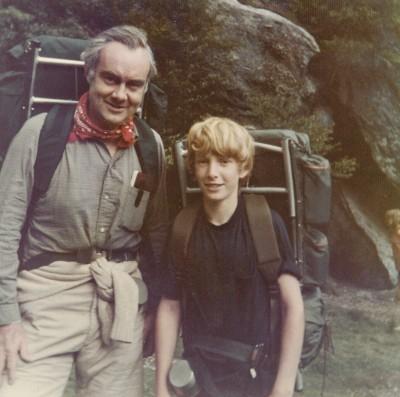
French, Bengali, Hindi, Urdu, Turkish, and Sinhala, held senior posts at the CIA and the State Department, where she served as chief of the intelligence bureau for South Asia. She died last year.
The family believed in plain living, in keeping with the senior Van Hollen’s Quaker background. Winter and summer vacations were Spartan affairs at their cabin in the Green Mountains of Vermont, where they did without heat, electricity, and telephone.
“We didn’t take fancy vacations. My parents put all their savings into our education,” says Cecilia Van Hollen, Chris’s younger sister, who teaches anthropology at Syracuse University. “We were brought up to believe that we should think about careers that would be intellectually stimulating and make the world a better place. That was almost the mantra coming from both my parents.”
Chris, the eldest of three, was born in 1959 in Karachi, Pakistan, where his father was posted. The family moved often, bouncing back and forth between their house in McLean and postings in Turkey, India, and Sri Lanka. For a curious child, life abroad was idyllic. Van Hollen remembers watching dancing bears shimmy down the streets of Ankara and seeing lambs sacrificed on street corners during Ramadan. In Sri Lanka, the family took trips into the jungles, where they saw leopards and elephants—they were once charged by a mother elephant—and snorkeled in waters teeming with exotic fish.
In each post, the family traveled from one end of the country to the other, partly to show the flag, partly to educate the children. In addition to the usual museums and temples, they would visit local factories to see how people worked and what their lives were like. It all left its mark.
“I developed an early interest in foreign affairs,” says Van Hollen. “In Sri Lanka, I went to a village and went into a hut, and there was a picture of John F. Kennedy on the wall—it was somebody whose life had been touched by the Peace Corps. That became one of my passions—how the US can interact with the rest of the world and be a leader.”
Chris came back to the States for his junior year of high school and went to the Middlesex School in Massachusetts, where his grandfather had taught. After the freedom and stimulation of living overseas, boarding school felt confining. “He didn’t really fit in at prep school,” says a friend from those days, James Lifshutz. “Neither of us did. He was very liberal, very rebellious, more worldly and well traveled than most of the other students. We both cared deeply about issues and had common interests in politics and world affairs that we didn’t share with the rest of the student body.”
At the same time, Van Hollen was a fun-loving kid who played football, careened around on a motorcycle, and didn’t mind stretching the rules. “We tended to regard curfews as suggestions,” says Lifshutz. “We would sneak into the girls’ dorms.”
“I was the kind who spent equal time on studies and social activities,” says Van Hollen. “Grades were not my main focus.”
At Swarthmore he buckled down, majoring first in history, then physics, then philosophy and became a campus leader in the fight against apartheid and the arms race with the Soviet Union. After earning a master’s in public policy from the Kennedy School, he landed a job with former Maryland senator Charles “Mac” Mathias as his legislative assistant for arms control. In the mid-’80s, when Mathias and Ted Kennedy teamed up to pass a resolution calling for America to adopt a comprehensive test-ban treaty, they tapped Van Hollen, still in his twenties, as their point man. All of this experience, plus 12 years of honing his political skills in the Maryland legislature, gave him a leg up when he returned to the Hill as a congressman in 2002.
“He came, you might say, as an advanced member,” says Hoyer.
Impressed by Van Hollen’s early work on behalf of the DCCC, Rahm Emanuel named him cochair of candidate recruitment in 2005. This should have been a plum for a second-term congressman, but it was no secret that his real goal was a seat in the US Senate. He had a problem, though: Maryland Democrats tend to return people to office election after election.
That was the calculus Van Hollen had to weigh when Senator Paul Sarbanes announced that he was stepping down at the end of his term in 2006 after 30 years in Congress. Benjamin Cardin, who’d been elected to the House in 1986, was in line ahead of Van Hollen.
Van Hollen spent the spring of 2005 traveling the state to gauge his support and raise money. He knew that he would be crossing some of his elders, including Mike Miller, who was close to Cardin. So was Steny Hoyer. “Of all the friends I have in this world, Ben is one of my two or three closest,” says Hoyer. “We go back 40-plus years. He was elected to the legislature in 1966, the same year I was, and his wife, Myrna, was very close to my late wife. So it was not a political decision. If Ben wants to run, I’m for him.”
When Van Hollen stood down in July 2005, he said he didn’t want to put his family through another bruising fight so soon after his 2002 House race. He also wanted to avoid a nasty primary.
“Chris can read the tea leaves,” says Miller. “It would have been a very divisive primary and so expensive that it would most likely have resulted in Michael Steele being elected to the US Senate. Remember that Cardin only beat Steele by six points.”
However disappointing it was to Van Hollen to pass up the Senate race, he has seen his star steadily rise in the House. Just weeks after the 2006 election, he was appointed to the House Ways and Means Committee and named chair of the DCCC.
Always a hard worker, Van Hollen has seen his workload increase exponentially. Gone are the days when he could take an afternoon off to take one of his children to soccer practice; he’d coached all of their teams when they played in the Montgomery County recreational league. The boys have now graduated to travel soccer, and Van Hollen tries to get to as many games as possible, but it’s not easy. “We make a real effort to protect weekends,” he says. “If I have a Monday-morning meeting in New York, I have told the staff not to schedule me to fly out on Sunday night, that I’ll just get up extra early on Monday morning. Keeping in touch with cell phones and BlackBerrys helps a lot too.”
“When you make a commitment like chairing the DCCC, everything else goes,” says Katherine. “We don’t do a lot of things or go to evening functions that aren’t absolutely necessary. Everything we do revolves around the kids.”
In one way, Van Hollen is lucky, stepping into the DCCC job at a time when the GOP is so unpopular. “The House Republican brand is so bad right now that if it were a dog food, they’d take it off the shelf,” says Northern Virginia congressman Tom Davis, who has joined the GOP stampede toward the door.
After a “wave” election like the one in 2006, which swept 30 new Democrats into office, the party in power almost always loses seats. But this year the Democrats are poised to pick up seats in the House, thanks to the DCCC’s six-to-one advantage in fundraising over its counterpart and a stronger-than-usual lineup of recruits.
“Saying Van Hollen is lucky takes absolutely nothing away from him,” says Stuart Rothenberg, editor of the nonpartisan Rothenberg Political Report, which handicaps congressional races. “Even if you’re lucky, you have to be good. The committee’s recruitment is good. The money is terrific, and their message is excellent. And when you look at the buzz they’ve created, even Republican operatives will tell you this is a very capable,
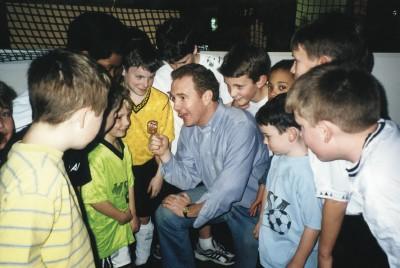
Photograph courtesy of Chris Van Hollen
very able DCCC.”
One challenge for Van Hollen is to get out from under the long shadow of his predecessor, Emanuel, who masterminded the Democrats’ comeback in 2006.
Rothenberg believes that Emanuel’s tactics fit the situation in ’06 when the Democrats were trying to claw their way back to majority status, but they might not be so appropriate now. “At the time, it took somebody like Rahm who had this driving ambition and energy—a 100-percent political animal who breathed, ate, and dreamt politics. You don’t get that sense with Van Hollen. He’s more down to earth, less overpowering—a guy who, if he was in a fraternity, would be rush chairman.
“I’m a huge admirer of Rahm, but there’s only so long you can put on a full-scale press before you tire your own team out,” Rothenberg says. “This time around, it’s not a bad thing to go with somebody like Van Hollen who’s less in your face.”
Where does Van Hollen go from here? One scenario would have him rising in the House leadership, perhaps becoming Speaker. He is in a position to help a lot of members who would return the favor if he were to move up the ladder.
If his heart is set on the Senate, he may have to wait. Senator Barbara Mikulski will be 74 when her term is up in 2010, and nobody is betting on her retirement. If she does step aside, there will be a crowded field of talented politicians jostling for position, many of them fairly young—people like Attorney General Doug Gansler, comptroller Peter Franchot, Howard County executive Ken Ulman, Baltimore County executive Jim Smith, Representative Elijah Cummings, and Kweisi Mfume, who made a run at the Senate in 2006. One of the brightest political lights, Lieutenant Governor Anthony Brown, a decorated war hero who served in Iraq, would be stiff competition, although he may prefer to wait and run for governor when Martin O’Malley steps down.
One stand that Van Hollen has taken could come back to haunt him: In 2006, he criticized Israel’s tactics in the war with Lebanon, angering some Jewish constituents. He quickly scheduled a five-day visit to Israel and reaffirmed his commitment to the Jewish state.
Van Hollen’s 90-percent rating by the liberal Americans for Democratic Action will probably not hurt him in Maryland, nor is it likely that his base in Montgomery County will prove a negative. For years, it was hard for Washington-area politicians to get elected to statewide office. Vote-rich Baltimore city and county were the usual launching pads; Maryland’s last three senators—Ben Cardin, Paul Sarbanes, and Barbara Mikulski—all had represented Baltimore. “I was the first governor to be elected from the Washington area in more than 100 years,” says Prince George’s County’s Glendening.
But times have changed, and so have the state’s demographics. Baltimore has been losing population while Montgomery and Prince George’s have grown so rapidly that they now account for nearly one-third of the state’s voters. If Van Hollen decided to run, he might actually have an advantage.
Could Van Hollen go even higher? With his combination of all-American good looks, affability, experience, and brains, some of those interviewed for this story suggested that he could go all the way to the White House.
Van Hollen laughs off talk like that. These days he’s far more concerned about the House races in November and how they might be affected by the prolonged, fratricidal battle between Barack Obama and Hillary Clinton.
“We need to maintain and sustain the energy and excitement that boosted our party’s turnouts so greatly in the primaries,” he says. “To the extent there’s a bitter feud and it doesn’t get healed, it undermines enthusiasm and could come back to haunt our congressional candidates, especially in districts where the race is tight. We need a big turnout to win.
“Having said that, we have a lot of momentum going for us. Polls show that people still strongly prefer Democratic leadership to Republican leadership. So all in all, I’d much rather be in our shoes than their shoes.”
This article is from the June 2008 issue of The Washingtonian. For more articles from the issue, click here.

